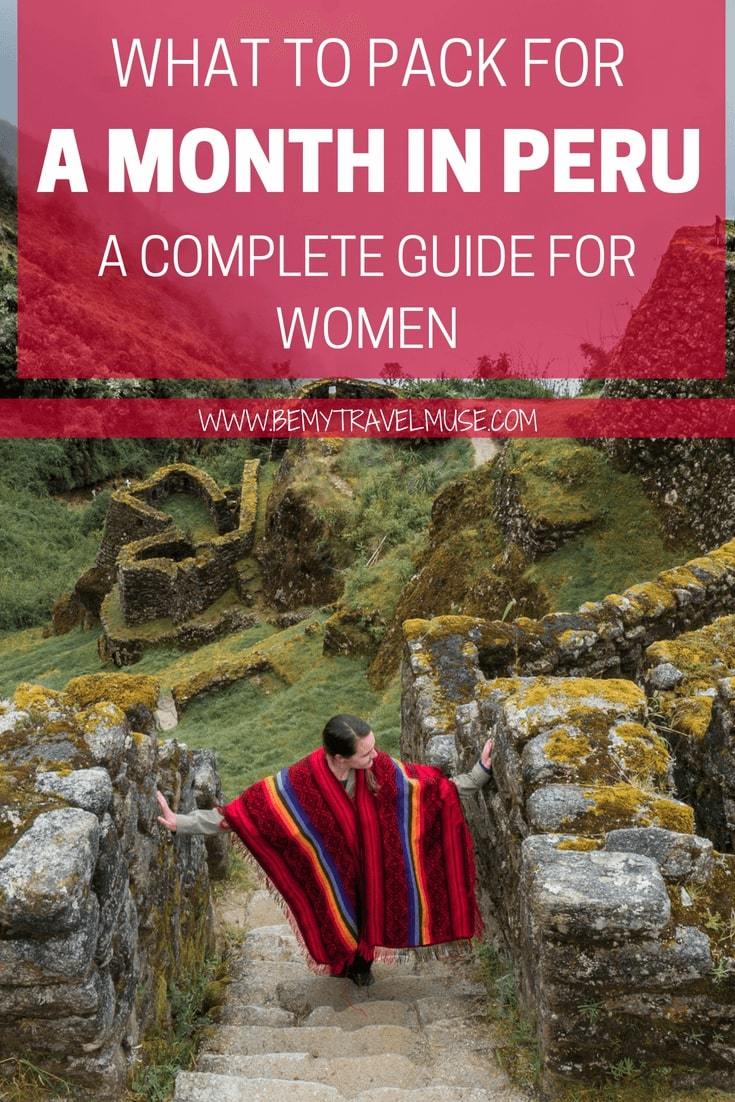
I learned a little something interesting when I set out to pack for my month-long trip to Peru: Depending on which source you’re quoting, Peru has 30 of 32 world climates.
If you want to see a nice variety of the country during your travels in Peru, it will be like trying to pack for a trip to the USA including both Hawaii and Alaska, a big city like Los Angeles, and the deserts of the American Southwest, all in the same trip.
That certainly makes packing light for Peru a challenge, especially if you do plan to visit the mountains, like Cusco, the Amazon jungle, Lima, and the sand dunes of Huacachina.
I was able to fit everything that I needed, including a sleeping bag and other camping gear, into a 75 L backpack, which was under standard airline weight limits though still not ideal. However you could cut down a lot if you don’t plan on bringing your own camping gear like I did. The key is in bringing layers and wardrobe pieces that serve multiple purposes. With that in mind, this is my perfect Peru packing list:
My Peru Packing List:
For the mountains and highlands:
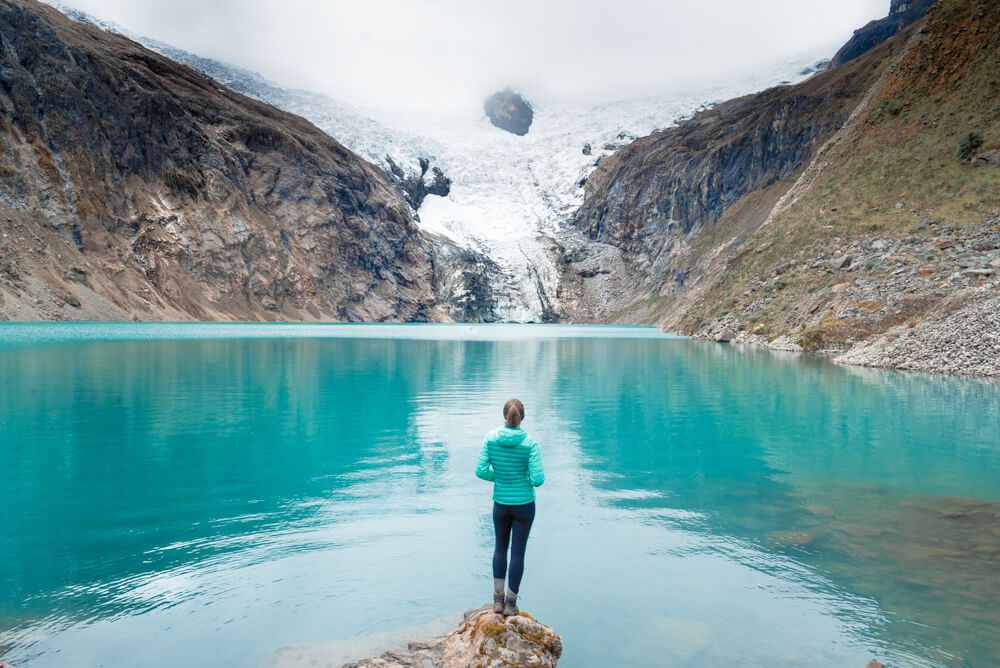
The highlands include any of the mountain areas, like Machu Picchu and any of the hikes leading to it such as the Inca Trail, Cusco itself, the Cordillera mountains, Lake Titicaca, and so on. Chances are if you’re visiting Peru you’re heading somewhere high up, and that means it will be cold. Bring the following:
- a foldable, water-resistant, lightweight down jacket
- 1 heavier, waterproof jacket (I usually wear my ski jacket)
- a pair of cheap, lightweight leggings
- 1 pair leggings for trekking
- Quick-dry cargo pants
- Merino wool base layer
- 2-3 cheap undershirts/tanks for layering
- Waterproof gloves
- Beanie and/or neck warmer (doubles as an ear warmer)
- a pair cheap thermals for sleeping
- 1 pair hiking boots
- a pair of Nikes or sneakers
- 3-4 pairs thick socks
- 2 sports bras and enough undies for a week
- Sunscreen (the sun at altitude is much stronger!)
If you’re doing some unassisted trekking, you’ll want to bring along additional gear like trekking poles, a tent, sleeping bag, etc. However you can almost always find a reasonably-priced supported trek with gear, guides, and porters, or you can rent gear.
For the Amazon:
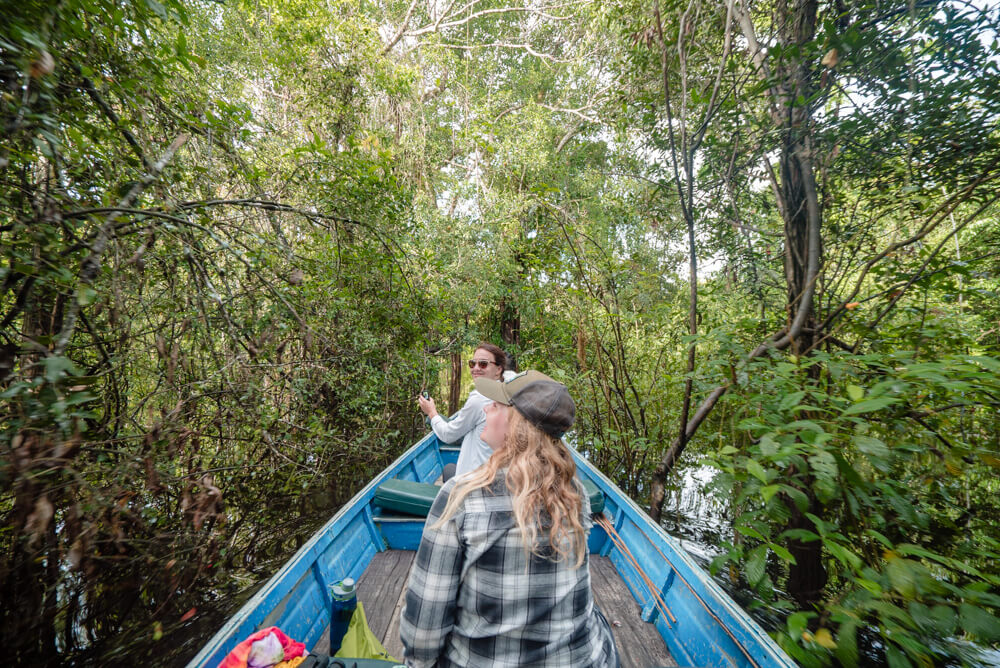
The Amazon jungle is hot, humid, and in almost every way, the opposite climate of the mountains and highlands. However, you can reuse the cargo pants, thick socks, and the lightweight shirts from the previous section, and add just a few lightweight extras:
- 1 lightweight rain jacket
- 1 pair loose-fitting, lightweight, water-resistant pants
- 3-4 lightweight shirts
- At least one bathing suit
- 2 sports bras and enough undies for a week
- 1 mosquito jacket
- 1 hat for sun protection
- 1-2 pairs shorts
- Mosquito repellent
For Lima and deserts
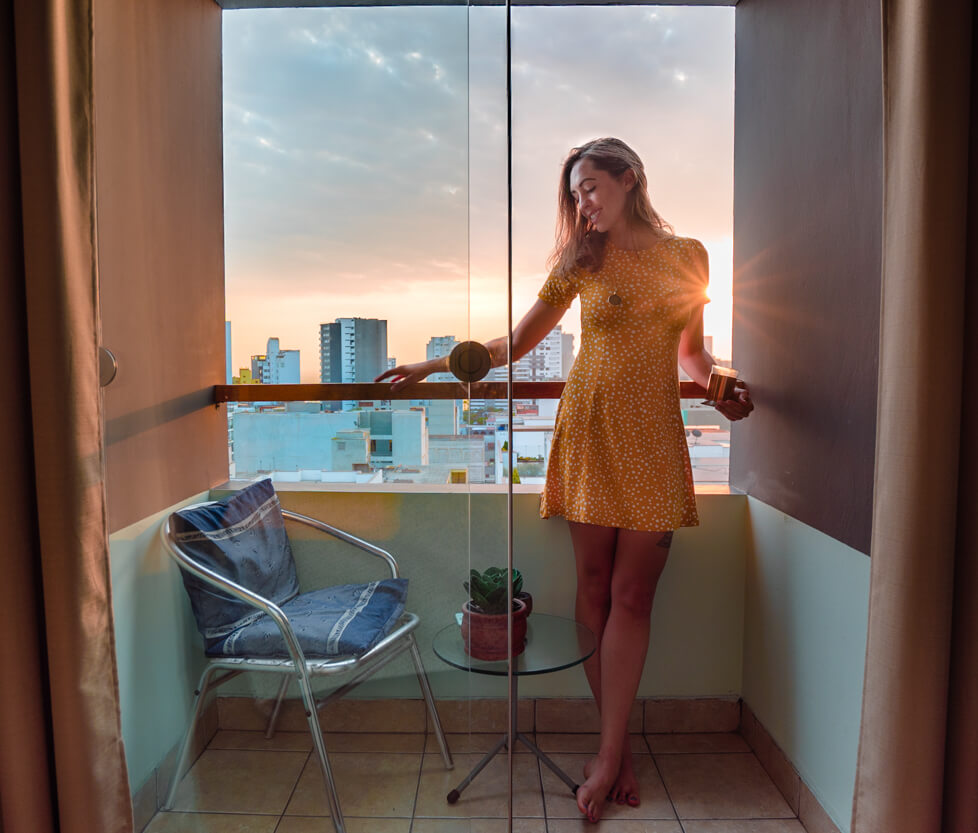
In sharp contrast to the climates mentioned above, Lima and Huacachina are dry deserts, which receive very little rain and can get quite hot. I also tend to want to wear non-trekking clothes when I’m in cities. I blend in more and just feel more comfortable. To make that work, I brought a couple of things just for this region:
- a dress (the one in the photo is from ASOS)
- 1 pair lightweight leggings (great for flying too)
- Repeat cargo pants or leggings for sandboarding in Huacachina
- 3-4 lightweight shirts/tanks
- a pair Nikes or sneakers
- Enough undies for a week
- Repeat lightweight jacket (deserts get cold at night!)
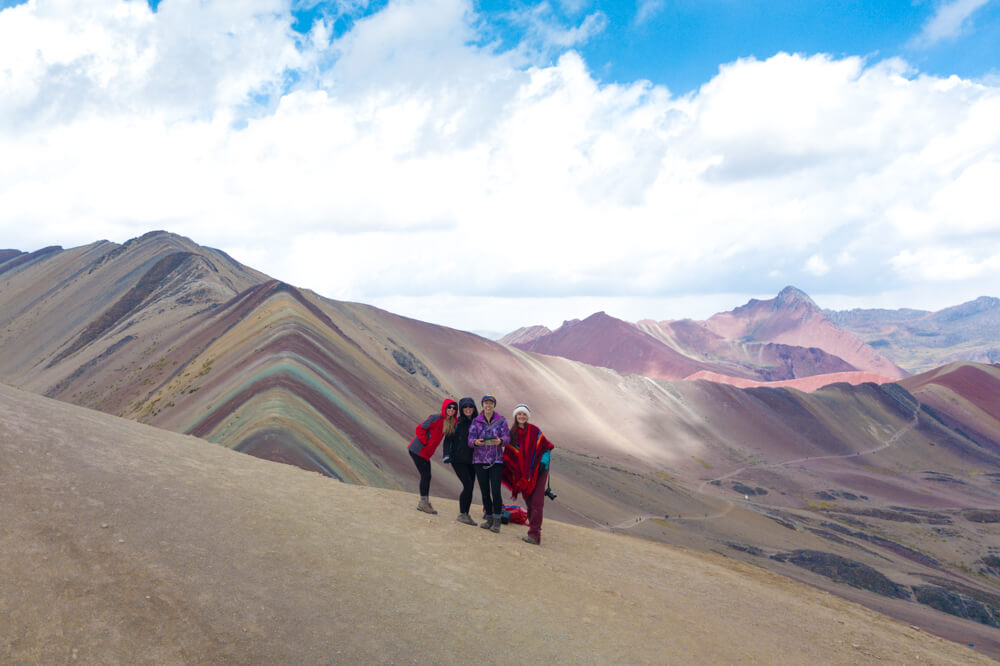
Though Peru not easy to pack for, it’s doable if you bring the multi-purpose items mentioned above.
You’ll also have many opportunities to buy cool things like the rainbow poncho pictured above, beanies, sweaters, scarves, and gloves made out of wool and even alpaca once you arrive in Peru. If you possibly can, leave some room for a little sweater adorned in llamas to bring back home with you. Prices will vary depending on the material and whether you buy off of the sidewalk or in a higher-end shop. Generally, you can haggle the price down. I paid $12 for the rainbow poncho in the photo.
I hope that helps to make packing for your adventure easier. If you have any questions, feel free to ask them in the comments!
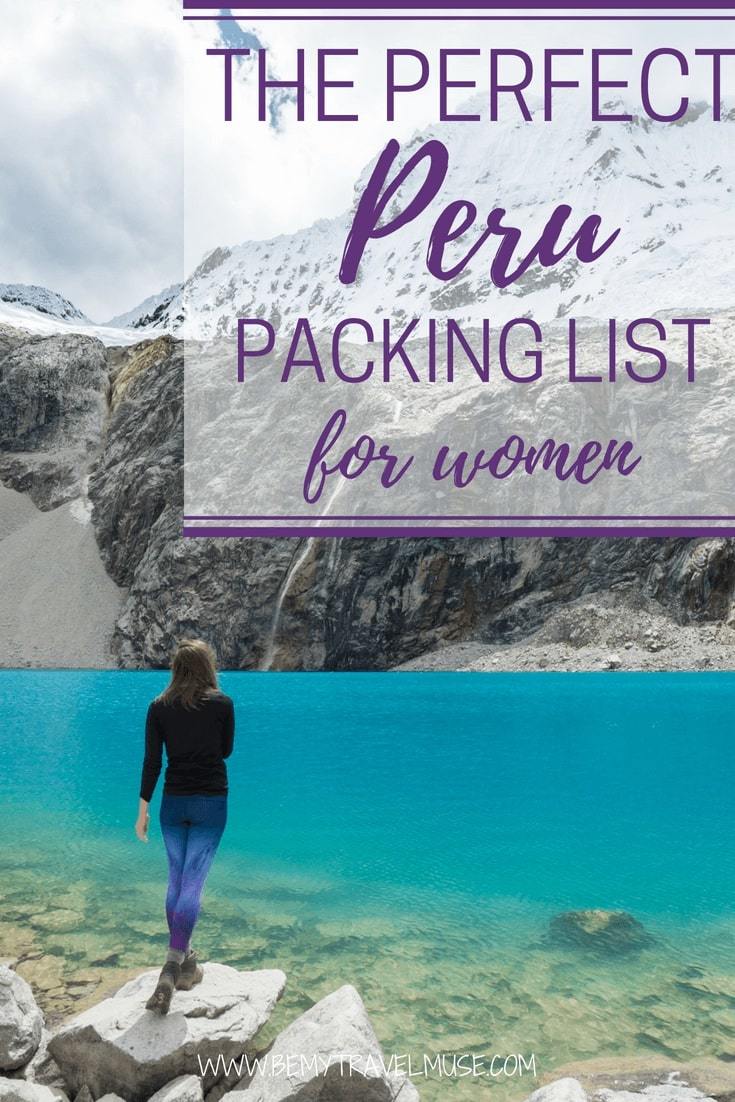
READ NEXT:
Hiking the Inca Trail: 15 Things to Know
*Some links in this post are affiliate links, which help support this site at no extra cost whatsoever to you. I only recommend products and services I use myself. Your trust always comes first!
Sabs says
Thank you! This will be most useful for when I finally go, which will hopefully be soon!
Ijana Loss says
Super useful! Why isn’t Peru talked about more?? Something for everybody, cheap prices, and easy and affordable to fly to from the US? Sounds like a major vacation destination waiting to happen
Kristin says
I meet a lot of people from the States in South American in general as compared to other parts of the world. Makes sense though for all of the reasons you just stated!
Dominique | dominiquetravels.com says
Great tips and at the perfect time! I’m travelling to Peru in two weeks so this list comes in handy 🙂
Kristin says
Fantastic!
Sugar says
Thanks so much for your list. Packing for Peru as we speak.
irene says
packing has always been a challenge to most women, myself included, travelling to peru seems so easy. thanks for sharing.
Dawn says
Thank you for this article. Hubby and I are off to Peru in September and have chosen to take many of the items you mention. I was worried about the cold as I don’t want to take too much so it’s good to hear that you can buy woollen items there.
Kristin says
Yeah there are lots of sweaters, especially in Cusco!
Jill Leturgey says
Is there much of a price difference on wool items in Cusco compared to the U.S.?
Kristin says
Yes I think so.
Eden Ninary says
Thank you for this article! It is very inspiring! Just one question, would you recommend bringing or renting camping gear (tent, sleeping pad and sleeping bag)? I already own quality ultralight gear but I don’t know if its worth lugging around the whole country when I wont be trekking.
Kristin says
I had the same debate. In the end I brought my own sleeping bag and pad but rented a tent and cooking equipment. Even though I set up the tent at the rental place to make sure there were no major issues, you still won’t be able to detect leaks until they happen, which they did. In the moment I vowed never to rent a tent again.